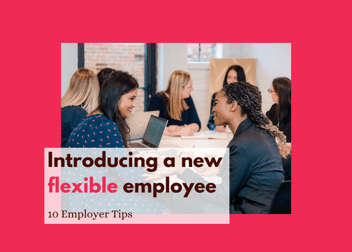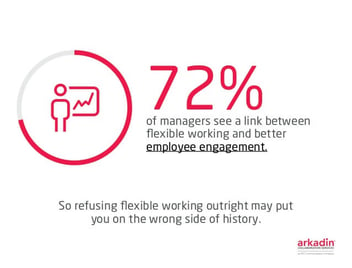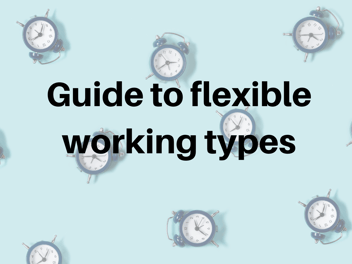Employers: 10 tips for introducing a flexible worker
Now we’re in our tenth year, it’s safe to say that we’ve amassed vast experience around helping employers to implement a successful flexible working policy. From establishing a sound flexible working pattern to considering existing employees, we share advice for good flexible working practice.
Here are our top ten tips…
-
Clarify the flexible working pattern on the first day
You’ve already gone over this in minute detail with the employee, but it can’t hurt to go over it on their first morning in the new job. It may also help to discuss any potential variations to the agreed hours as you learn how flexible they can be. That will be useful particularly during busy periods in the office. Flexible working patterns are very often just that – flexible.
-
Establish ‘out of hours’ availability
Flexible workers may wish to do some work when they’re not in the office. It shouldn’t become the norm but committed flexible employees find this useful at times. Make sure you discuss and agree the circumstances when it’s ok or important to contact them, and how you do that (calls, emails or text).
-
Set a regular ‘handover’ process
Your flexible employee will want to tie up any loose ends on their last day in the office each week. However, there will be occasions where work needs to be done when they’re not there. Set up a formal handover process identifying what and to whom things can be handed over to when necessary.
-
Make sure communications reach everyone
Sometimes news travels fast, but not always. If you’re shouting across the office about a piece of new business, don’t forget that your flexible employee needs to know about it too. Keep team meetings to a day when everyone is routinely in the office and inform your team of news and events in advance.
-
Check the team really understands how it works
The key to successfully introducing a flexible worker is good communication. So make sure you explain to your team why you’ve hired your flexible employee, how they will add value and why you didn’t opt for full-time. It’s worth putting time into how the team will work as a cohesive unit from the outset.
-
Set clear and achievable targets and goals
If you judge your team by how long they spend in the office working hard for you, it’s time to change that. Maximise the value and impact of your flexible employee by setting clear objectives or targets to be achieved, based on their skills, experience AND working hours. This will provide clear structure to the role and help you to assess their progress. That way, you can see whether they are being stretched enough. In fact, why not do the same for all your employees.
-
Review the success of the flexible working format
Plan an informal review to discuss performance and achievement against the flexible worker’s objectives relative to the working format. This can be an effective way to see whether the introduction of your flexible working pattern is meeting the needs of the job, the team and the company. It’s usual for slight tweaks to be made to the working format or working hours/days to meet the needs of the job more effectively.
-
Get the technology right
If your flexible worker is doing work outside of the office, try to give them the technology to make this as easy as possible. If they’re regularly working at home, they’ll need good broadband and a laptop which should be provided as standard. You could also offer a Smartphone with a call allowance if they’re using their home phone to make calls.
-
Treat your flexible worker like a normal employee
There’s no need to give special treatment to flexible workers. They need to be on time (or available), meet their objectives and follow company policy just like any other employee. If they aren’t meeting their targets, you should follow your usual performance, improvement and disciplinary process. Just make sure you’ve been fair in structuring the content and demands of the job around the contracted hours.
-
Give employees responsibility for their own effectiveness
Here at Ten2Two, we believe that flexible employees should take control of any issues that arise because of their flexible working pattern. They need to be the master of their own effectiveness. For example, it should be up to the employee to take the initiative in proposing any necessary changes to the role that may help increase productivity. They should also deal directly with any internal communication issues and make sure they carry out solid handovers each week.
Get in touch today if you’d like to introduce a flexible worker into your business. To find out more about flexible working patterns and how they could work within your company, please give us a call. Let us make your next hire a stress-free, flexible one.


 Back to resources
Back to resources 4 min read
4 min read








